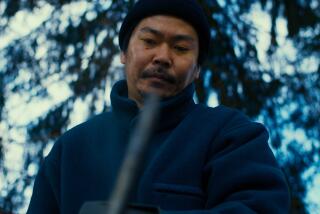Book Review : A Collection of Modern, Short Fiction From Japan
- Share via
A Late Chrysanthemum: Twenty-one Stories From the Japanese, translated by Lane Dunlop (North Point Press: $16.50).
Japan keeps coming at us in bits and pieces. Toyotas and Trinitrons, Ikebana and Issey Miyake, sushi and shiatsu; and short poems and short fiction appearing in one anthology after another.
Westerners know, though grudgingly, that Japanese technology is more than a collection of gadgets. It possesses an integrity and a strength that has overpowered many of our own industries. But how do we regard Japanese culture? A century after Pierre Loti bid farewell to his fantasy land, we still seem enchanted by a Japan of falling blossoms and exquisite signs which, as Roland Barthes saw the Empire, possess no depth or meaning.
“A Late Chrysanthemum” is a sampler of modern Japanese short fiction. The style here is often close to certain recent American short stories: clean, lyrical prose serving domestic, faintly narcissistic details; and a mood of malaise or else, as Dazai Osamu writes, “happiness in things like the changing of a light bulb.”
Control and Subtlety
This anthology is notable for the marvelous control and subtlety of the translations. The selections, if often curious (at least seven of the 21 works have already been translated), doubtless reflect the taste of Lane Dunlop, the editor and accomplished translator.
In his preface, Dunlop explains what Japanese fiction offers: “purity and simplicity of feeling as its own justification,” and a sense of Nature as a “saving grace.” And so when characters undergo, as in Abe Kobo’s work, a Kafka-esque metamorphosis, they turn not into cockroaches but into gentler things: “a red cocoon, a stick, a sort of water.”
But how gentle, simple and pure are these stories? In Shiga Naoya’s “Infatuation,” the hero is drawn to a young Gion teahouse attendant, who promises “a savor, long since lost in his wife, of a fresh fruit.” A 15-year-old in Ozaki Shiro’s “The Wagtail’s Nest” is likened in her defenselessness to a chick, or to a “ripening fruit waiting for me to come to her.” Nature to the rescue, though we might reasonably ask who is being saved, and from what.
Free of Relationships
Repeatedly, the feeling for Nature seems to excuse people from responsibility and from life. It is a way free of relationships, a pull toward non-existence. “For a while I was even able to forget vulgar human life and society,” claims the narrator of Shimaki Kensaku’s “The Red Frog,” as he watches a frog first struggle against, then resign itself to death in a whirlpool.
And there are explicit images of natural processes going bad or running amok. In the title story by Hayashi Fumiko--the only woman writer in this group of seven--a proud, dissolute woman ages gracelessly: “A woman who was 56 years old bared its fangs in her heart.” The agitated barber in Shiga’s “The Razor” nicks a customer, then plunges his blade into the bloodied throat. Abe’s “Flood” comes on in a sudden, apocalyptic liquefaction of whole populations, “who flow toward lower ground.”
However sure the lyrical impulse, these mostly confessional stories tell of a complex anxiety and loss. It is not the fact, but the fear of all things passing away, that illuminates Kawabata Yasunari’s “The Grasshopper and the Bell Cricket,” and in his “The Silverberry Thief,” gives such enduring strength to a single resonant line: “a child walked by rolling a metal hoop that made a sound of autumn.”
An anthology such as this invites us to pick it up and put it down, taking a provisional, aesthetic satisfaction. But the better stories--Shiga’s “A Gray Moon,” Dazai’s “Memories”--remind us there is more. Not just ephemeral bits and pieces, modern Japanese fiction is a powerful and continuous story about survival and the difficulties of keeping a culture alive.
More to Read
Sign up for our Book Club newsletter
Get the latest news, events and more from the Los Angeles Times Book Club, and help us get L.A. reading and talking.
You may occasionally receive promotional content from the Los Angeles Times.








